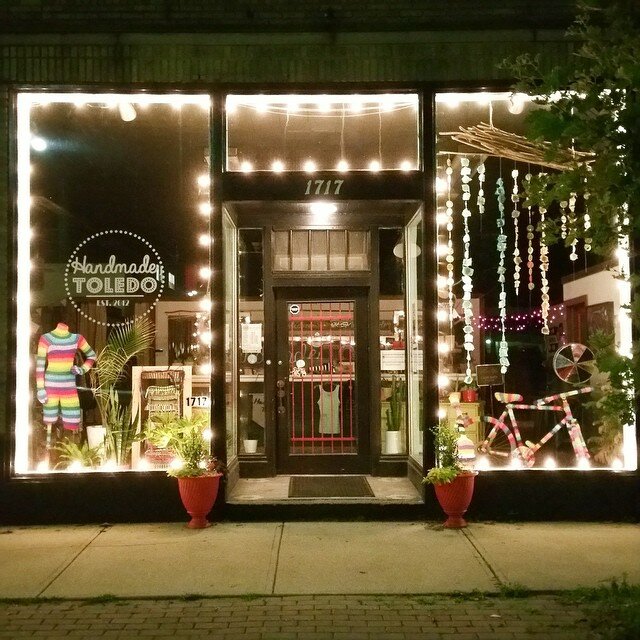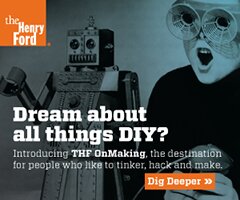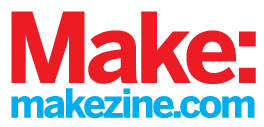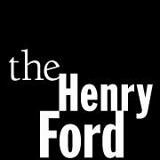
We’re excited to welcome Handmade Toledo to this year’s Maker Faire Detroit as curators of our craft sales vendors.
Tell us about Handmade Toledo.
Since 2012, Handmade Toledo has been bringing you the Maker’s Mart indie craft fair in April in November, along with mini marts and pop-up shops in and around the Toledo area. Two years into our DIY adventure, we decided to put on our big-kid britches and settle into a brick and mortar at 1717 Adams Street in the beautiful Uptown District in Toledo, Ohio. 1717 Adams Street now houses the Handmade Toledo Maker Shoppe featuring more than 100 local and regional handmade artists, a workshop space for all different types of classes, artist studio spaces and event space.
How do you discover new crafters?
We put calls out for artists out on our website, Facebook, Twitter, Instagram, and local papers. A lot of time it’s from word of mouth from other makers. We love to share the love. We can’t tell you how many great shows, shops, festivals, faires, and markets we’ve found out about from other makers talking about having great experiences. The maker community is pretty great with that.
What do you look for in a maker?
Craftsmanship, originality, use of materials, creativity and innovation.
What trends in DIY do you see right now?
Fiber arts have been making a big comeback it seems. Lots of crocheting, knitting, weaving, macramé, and sewing. We’ve also been seeing a lot more industrious materials being used like metals, leather, and glass. And we love ALL of it!
Handmade Toledo Craft Vendors – Maker Faire Detroit 2015
Earthenwood Studio Ceramics: Handcrafted functional ceramic wares such as plates, bowls, and mugs, painted in durable colorful glazes with geeky and pop culture themes.
Joseph Mazzola: Up-scaled/repurposed vintage electric fans and cast iron speakers enclosures into beautiful table lamps using exposed filiment Edison bulbs and painted vivid eye-catching colors. Also handmake black iron pipe lamps.
Pretty Bookish: Pretty Bookish began with a box of old books. An idea was born to give these discarded books a new life by tuning them into pretty, handmade, repurposed products for people who are passionate book lovers and readers. Pretty Bookish offers playful tributes to the adventures the reader has had, the emotions they felt, and the characters that they fell in love with while lost in their favorite book. Handmade products include jewelry, keychains, typography, paper flower vases and terrariums.
Mary’s Monstrosities: I am using the centuries old Venetian mask-making technique of pressed paper mache to create monster and horror themed masquerade masks. I start by making an original clay sculpture, then take a plaster mold, then use 100% recycled hand made paper to press in the mold with a waterproof binding to create the mask. The finished product is extremely light and durable, and a very odd conversation piece.
Circuit Breaker Labs: Handmade jewelry and accessories made from recycled circuit boards and resin.
Rebel Nell: Rebel Nell creates defiant jewelry with a purpose. Our mission is to employ disadvantaged women in Detroit, to educate them on financial management, life wellness, and business, and to empower them to successfully transition to an independent life. Our jewelry starts with graffiti that we collect after it has fallen due to the weight of many layers of paint, and damage from Mother Nature. These scrap pieces of graffiti are then turned into beautiful works of wearable art. Each piece is unique.
Mike Roll: Mike Roll is a comic artist and illustrator from the Detroit, Michigan area. He’s best known for his adorably-gruesome “Apooka” series of children friendly comics chronicling the life (death?) of an endearing, cute-as-a-button zombie child. He is also illustrator of several children’s books including; Karli Meadows Makes Friends and The Trains of Christmas.
Algae Skateboards: crafted by me, as the sole creator and proprietor. Every board is pressed using the best wood available to me, then hand-shaped and designed. The graphic image is wood-burned and painted, and the whole board is stained and finished. The boards are both art pieces and well-made skateboards designed to be ridden and abused.
JKM Soy Candles: Candles hand-poured in small batches using 100% soybean wax and unique scent combinations using fragrance and essential oils. The candles are made in mason jars and upcycled tin cans. I also make hand-dipped incense and soy melts.
Cool Critters: I create weird, handmade, stuffed animals called Cool Critters. They can be plush monsters, extraterrestrial softies, unsettling couch companions, pet sacrifices or best friends. They are 100% handmade in Ypsilanti, Michigan and are all one of a kind.
Detroit Manufacturing brand clothing: Exhibit and sales of original design, Detroit-themed apparel, accessories, pet/baby items, and home decor items.
Strancar Studios: Sales of handmade glass objects. Functional and decorative objects in an intentionally limited color palette.
Jen Talley Art & Design: Original art including greeting cards and prints printed by the artist as well as handmade magnets and buttons.
From J.Loo To You: Goods created with (mostly) second-hand and vintage materials. A variety of goods include jewelry, accessories (for humans and pets), terrariums & planters, and home decor. Home goods feature a lot of hand embroidery, sewing, and painting, reflecting the artist’s aesthetic of kitschy meets cartoons with a heavy influence of pop culture.
Patchcoat by Carrie: Old sweaters, suits, dresses, etc., that are cut apart and then made into “Patchcoats.” These are one-of-a-kind coats/dresses/tunics.
Oh Sew Betty!: Oh Sew Betty! specializes in custom retro, rockabilly, pinup and bombshell dresses, pillows and bags.
Paintings by Jason Gibner: Jason Gibner brings all of your pop culture obsessions to life via handmade, original and totally awesome paintings inspired by comics, sci fi & everything that is awesome. If you feel like your bedroom wall is incomplete without that portrait of BB-8, Thanos, Nien Nunb, R5-D4, or a shirtless Abe Lincoln, be sure to seek out Jason Gibner.
Krmbal: Krmbal is dedicated to being eco-conscious and increasing awareness about sustainability, particularly in textiles and clothing. I create original designs and apply them to 100% organic cotton apparel, discuss different types of textiles and create up-cycled items from cast off textile scraps, as well as art prints, sketchbooks, etc. I’ll be showing how to make up-cycled no-sew textile coaster or place mat, bookmarks (easy sewing), cat toys (sewing & no-sew) & a fabric scrap swap.





















